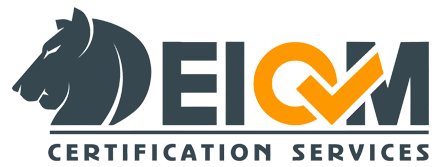OHSAS 18001, also known as Occupational Health and Safety Assessment Series, is an internationally recognized standard that provides a framework for organizations to establish, implement, and maintain an effective occupational health and safety management system. It sets clear guidelines for identifying, controlling, and minimizing risks associated with health and safety hazards in the workplace.
Introduction
In today’s fast-paced and ever-evolving business world, occupational health and safety (OHS) plays a crucial role in ensuring the well-being of employees and the overall success of organizations. To meet these objectives, various international standards have been developed, and This standard stands out as a professional safety standard that sets the foundation for workplace excellence. This article aims to provide a comprehensive overview of ISO OHSAS 18001, its benefits, implementation process, challenges, and future trends.
Benefits of Implementing
Implementing ISO OHSAS 18001 brings numerous benefits to organizations. Firstly, it helps in reducing workplace accidents, injuries, and illnesses, thereby improving employee well-being and morale. Secondly, it assists in legal compliance by ensuring organizations meet the necessary health and safety requirements. Moreover, This standard enhances an organization’s reputation and credibility, promoting trust among stakeholders, clients, and employees. Additionally, it leads to cost savings by minimizing incidents, insurance premiums, and potential legal liabilities.
Key Elements of ISO OHSAS 18001
ISO OHSAS 18001 comprises several key elements that guide organizations towards achieving excellence in occupational health and safety. These elements include:
- Policy and Commitment: Establishing a comprehensive health and safety policy, ensuring management commitment, and defining roles and responsibilities.
- Planning: Identifying hazards, assessing risks, setting objectives, and defining operational controls.
- Implementation and Operation: Implementing health and safety procedures, emergency preparedness, and effective communication.
- Performance Evaluation: Monitoring and measuring health and safety performance, conducting audits, and taking corrective actions.
- Management Review: Regularly reviewing the effectiveness of the system, identifying areas for improvement, and ensuring continuous enhancement.
Steps to Achieve ISO 18001 Certification
Obtaining ISO OHSAS 18001 certification requires a systematic approach. The following steps can guide organizations through the process:
- Management Buy-In: Gain support and commitment from top management to prioritize occupational health and safety.
- Gap Analysis: Assess the existing health and safety management system against the requirements of This standard
- Planning: Develop a roadmap for implementation, setting realistic goals and timelines.
- Documentation: Prepare the necessary documents, including policies, procedures, and work instructions.
- Training and Awareness: Educate employees at all levels about the importance of health and safety and their roles in compliance.
- Implementation: Execute the planned activities, ensuring effective hazard identification, risk assessment, and control measures.
- Internal Audits: Conduct internal audits to evaluate the effectiveness of the system and identify areas for improvement.
- Certification Audit: Engage a certification body for a formal audit to assess compliance with ISO OHSAS requirements.
- Corrective Actions: Address any non-conformities identified during the certification audit.
- Certification: Upon successful completion of the certification audit, organizations receive ISO OHSAS certification.
Integrating ISO OHSAS 18001 into Existing Management Systems
Organizations that have already implemented other management systems, such as ISO 9001 for quality management or ISO 14001 for environmental management, can integrate This standard seamlessly. By aligning the requirements and processes, organizations can achieve better coordination and resource optimization.
Continuous Improvement and Auditing
ISO OHSAS 18001 emphasizes the importance of continuous improvement. Organizations should regularly evaluate their health and safety performance, identify areas for enhancement, and implement corrective actions. Conducting internal audits and seeking external expertise can provide valuable insights into the effectiveness of the system and ensure compliance with the standard.
Training and Education
To ensure successful implementation and sustained compliance with ISO OHSAS 18001, organizations should invest in training and education programs. Employees need to be equipped with the necessary knowledge and skills to identify hazards, follow safety protocols, and actively contribute to a safe working environment.
Challenges and Solutions in Implementing ISO OHSAS 18001
Implementing This standard can present challenges, such as resistance to change, lack of resources, and complex regulatory requirements. However, these challenges can be overcome through effective leadership, adequate resource allocation, and engaging employees at all levels. Seeking external assistance from consultants with expertise in OHSAS 18001 can also provide valuable support during the implementation process.
Industry-specific Applications of ISO OHSAS 18001
ISO OHSAS 18001 is applicable across various industries, including manufacturing, construction, healthcare, oil and gas, and transportation. Each industry faces unique health and safety risks, and This standard provides a flexible framework to address these specific challenges while ensuring compliance with legal and regulatory requirements.
Conclusion
ISO OHSAS 18001 is a professional safety standard that empowers organizations to prioritize occupational health and safety, protect their employees, and enhance overall operational excellence. By implementing this standard, organizations can foster a culture of safety, reduce accidents and incidents, and achieve legal compliance. This standard is a valuable tool for organizations committed to the well-being of their workforce and the sustainability of their operations.
Contact EIQM
To contact us, please fill out the form below. We will contact you as soon as possible. You can also apply through this form if you would like to receive system certification or representation of EIQM Certification Body.

